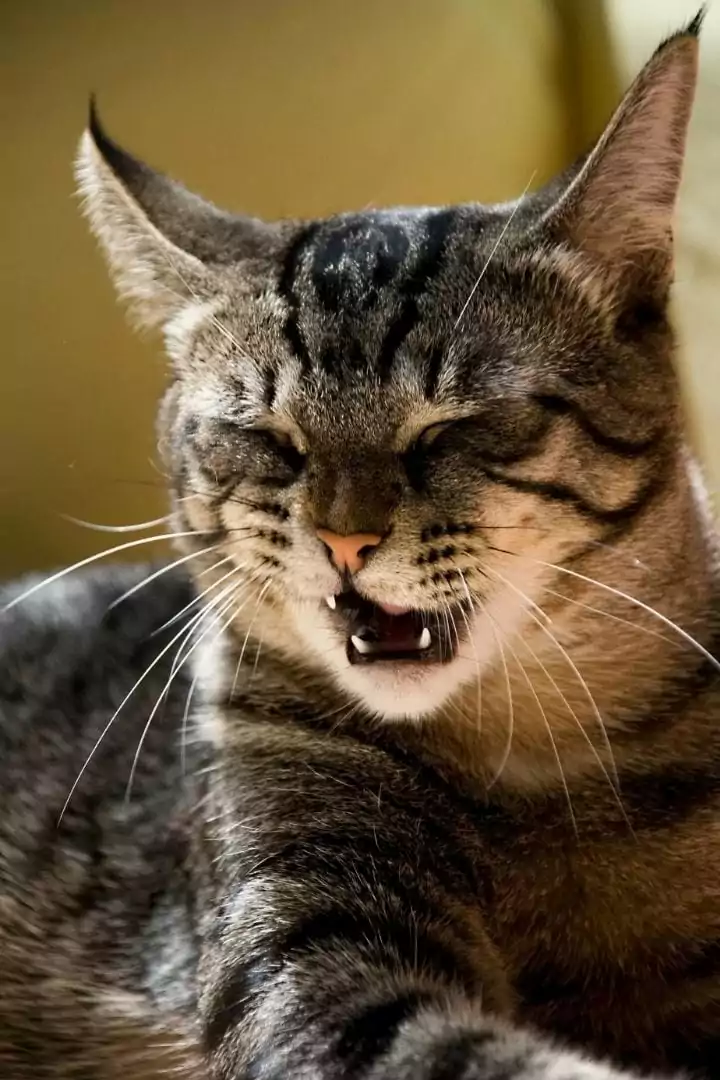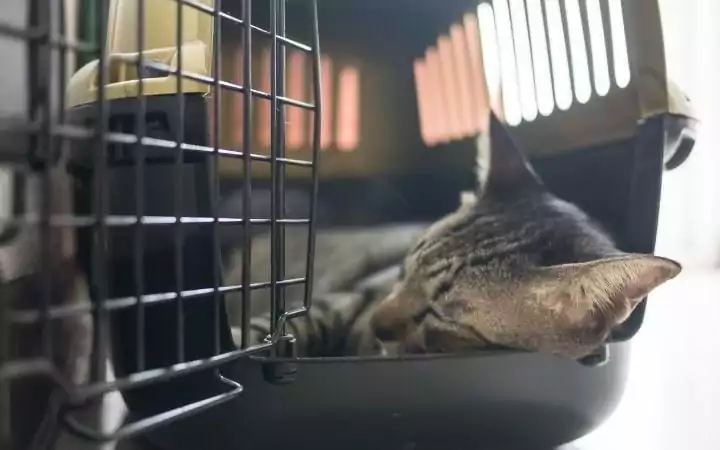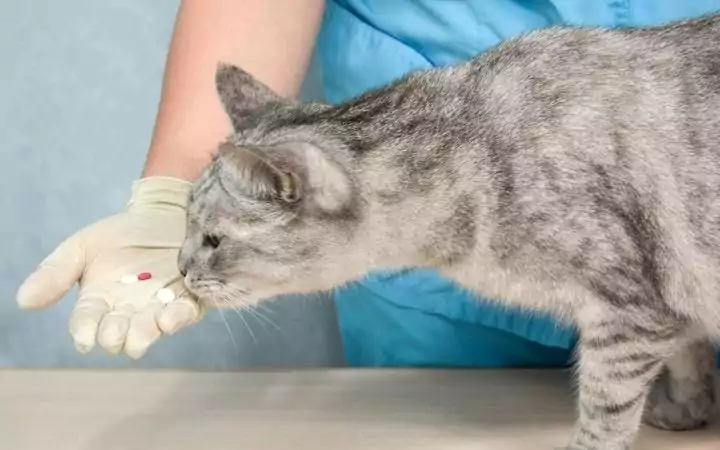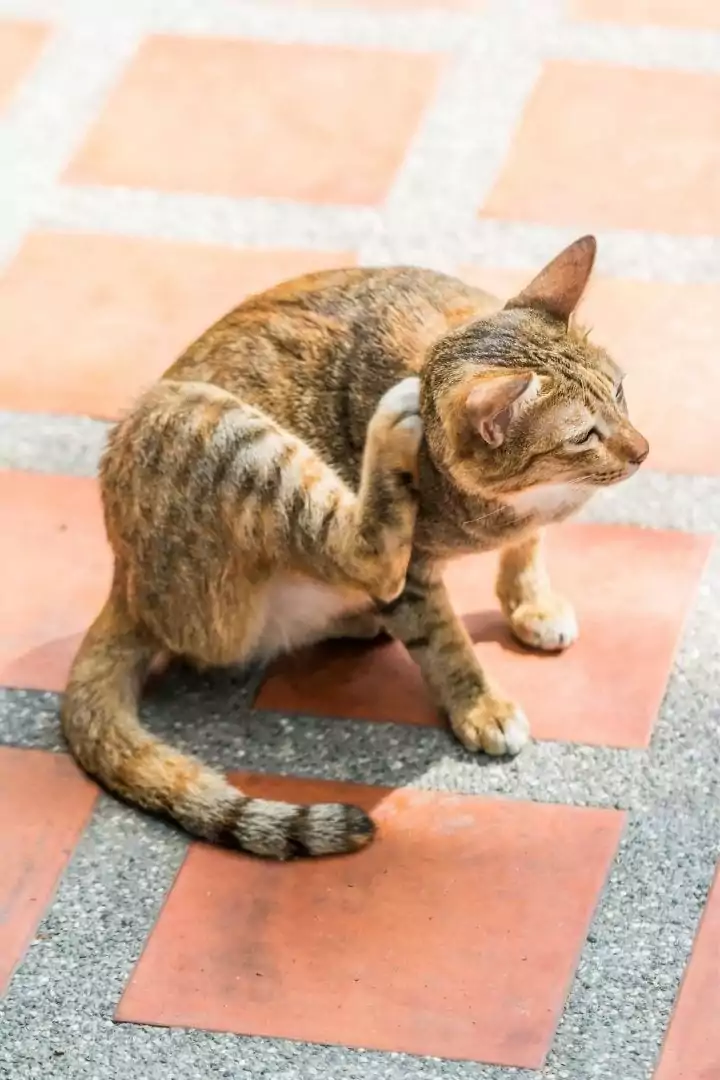Let’s face it. Cats cough, a lot. They also puke a lot but that’s not what we’re focusing on. Like us, those lovely dust bunnies and pollen soaked trees can cause allergies in our furry felines. So what do you do? One word, antihistamines! There’s no doubt the most common and well-known antihistamine is Benadryl. Can you give a cat Benadryl? Continue reading if you want to find out!
Benadryl, also known by its generic name Diphenhydramine, is used to block histamine which is responsible for those watery eyes, runny noses, and unwanted skin reactions. Knowing why, and when to use it is something that is very important in the journey of understanding Benadryl.
How Benadryl Works
So histamines, they’re a great thing. They help rid cats’ bodies of allergens and are very important in the inflammation process. However, they are known to overreact from time to time. In order to understand how Benadryl blocks the H1 receptor in order to avoid an allergic reaction, we must first understand how the chemical histamine works.
When a foreign pathogen enters the cat’s body (In this case a bee sting, dander, pollen, etc) histamines are released. In order for histamines to do their job, they bind to receptors that are located throughout the cat’s body on their nerves, smooth muscle, endothelium, glands, and mast cells.
In the cat’s body, there are two types of histamine receptors known as H1 and H2. This allows histamine to create hives and swelling, as well as discharge from the nose and eyes. When it comes to allergies that are treated with Benadryl, we are referring to blocking the H1 receptor.
In doing so we stop histamine from getting to the areas of the body that cause unwanted side effects that are the body’s defense to get rid of the pathogen. H2 refers to the body’s response to a pathogen in the gastrointestinal tract which is why Benadryl can also be used for motion sickness.
Why Give Benadryl
Benadryl is super convenient. Most of all it’s over the counter. For a pet owner that can be life-saving. They can keep it in the house at all times, and also do not have to worry about their clinic being open if they need it. Benadryl comes in tablets, capsules, liquid, and injectables in various strengths.
It’s important to stress to owners however that most cats will turn their prissy little noses up at any liquid form because obviously the flavors are not tuna or chicken. The best formula is the one that the cat will take easiest. Of course, the injectable is only for veterinarian use but it comes in super handy when a severe adverse reaction is taking place and we need to get it into the body quickly.
Can You Give a Cat Benadryl
Simply put, yes! There are many reasons why a cat would need Benadryl, so let us discuss.
What Causes Allergies in Cats?
- Vaccine reaction – A vaccine is a weakened or modified version of a virus that is given to an animal or person to help build antibodies. This is important in the defense against the pathogen. Sometimes, the body can overreact and start attacking itself along with the pathogen. This is where antihistamines like Benadryl are a lifesaver – literally. It allows cats to get the vaccine that will protect them against horrible viruses without having their body go into inflammation overload that will sometimes cause life-threatening damage.
- Bug bite, sting, or animal defense – another reaction can be from a bug bite or bee sting. Bugs and bees have no limits. They are not prejudiced against fur and have no issue biting cats. Like us, cats can have severe, and uncomfortable reactions to the bite or sting and Benadryl can help tone it down.
- Skin issues – cats are known to have plenty of skin issues which often results in self-mutilation. Self-mutilation comes in the form of biting, scratching, licking which can cause secondary infection and open up a whole other can of worms. So by giving Benadryl early this can be prevented.
- Sedation – humans are well aware of Benadryl’s drowsy properties- which by the way is considered an unwanted side effect. However, it can be used to our advantage. Going on a long trip and have a cat that hates the car? Benadryl is a safe option for us to send your kitty off to sleepy land.
- Premedication – Benadryl is often used to treat nausea in cats and can be included in premedication for certain procedures.
Clinical Signs of Allergies and Allergic Reactions
Allergies signs are very similar to the symptoms of allergies in humans. Coughing, sneezing, runny nose, watery eyes. It’s important to seek veterinarian advice however to help distinguish the cause of these symptoms. You would not want to give an antihistamine if it’s contraindicated. Some severe cases of allergic reactions consist of swollen paws, localized swelling in the face or area of invasion, difficulty breathing, lethargy, collapse, diarrhea, and vomiting. It’s important to stress to owners in severe cases to seek veterinary care right away.
Benadryl Side Effects and Contraindications
Okay, so Benadryl is great right? Of course, but in a well-balanced world where there is good, there is also bad. Let’s talk about side effects and when to avoid Benadryl. Side effects are unwanted and range from mild to severe so it’s important to know what they are in order to identify them.
Obviously vomiting and diarrhea are an adverse reaction but also, urination issues, lethargy, dry mouth, inappetence, and over-excitement. Like all other drugs administering too much of the drug can result in an overdose and death.
Benadryl Dosage for Cats
The most common dose used in the veterinary field is usually 1mg/ pound of body weight. For simple calculation purposes, a 12.5 pound cat would get 12.5mg of Benadryl. Benadryl comes in 50mg, 25mg, and 12.5mg. So depending on the dosage, the tablets can be cut to the nearest lowest mg strength needed.
When giving liquid it’s important to consult a veterinarian to make sure the dose is accurate. Liquid doses can be a little tricker and you want to make sure that the flavor is not harmful to your cat.
Make sure you never give Benadryl (or any drug for that matter) without first consulting your veterinarian.
There are many cases where Benadryl can do more harm than good and certain animals can only tolerate certain doses. Remember even though we can get this drug over the counter it does not mean that we do not consult a professional first.
When to Avoid Giving Benadryl to Cats?
Speaking of more harm than good, Benadryl is contraindicated in certain cats with certain ailments. Cats with heart disease, cats on certain medications such as Selegiline, blood thinners, certain preventatives, and epinephrine. It should also be avoided in severely anxious cats, and cats with high blood pressure.
The Art of Giving Benadryl to Cats
I recommend having all your tools on hand when giving Benadryl. Make sure you first speak to your veterinarian to establish that 1. your cat CAN get Benadryl and 2. the dose is correct. Then keep the proper mg in your house with a chart that instructs the frequency of the drug and dosage information.
It’s also a good idea to keep a syringe in case you need to make the medication into a liquid or if your veterinarian instructs which liquid to give. It’s also important to know when to give the medication. For instance, it’s best to give prior to any possible adverse vaccine reaction, and an hour before the anxiety-provoking event.
Prevention
Of course, once we identified why our cat may need Benadryl we can do our best to prevent the need for it. When it comes to adverse reactions make sure we give it prior to the reaction. Now for things we can control. Fleas for instance often cause dermatitis so the best way to treat fleas is to prevent them!
Use a monthly preventative to keep these lovely little jumpers away while keeping your cat itch-free. If your cat has environmental allergies then keep them inside, and clean often. Avoid any new fragrances or highly potent candles, detergent on beds, and sheets that your cat may lay on.
We now discussed in length why or why not we give our cats Benadryl. The main takeaway is to always consult a veterinarian first to make sure we avoid incorrect doses. It’s also of extreme importance to give the full story so your veterinarian can assess if Benadryl is the right drug for your cat.
Also before giving Benadryl we should rule out the need for it and try to find other approaches in case it can be fixed without medical intervention. In cases that do not fall into that category however, we are lucky we have an over the counter drug that can help fix some of our cats’ most annoying issues.





